I was visiting my parents in Mineola back in January of this year, and spurred on by Gobble's photos of what were supposed to be the remains of a very old settlement in Texas, I made a day trip southeast of Longview to the community of Easton, which sits south of the Sabine River in southeastern Gregg County. Once in Easton, I followed the directions supplied by Gobble and turned onto a road that didn't seem to have a name, leading north towards the Sabine River into a clearing dominated by a natural gas pipeline. No road signs, no markers of any kind. Just a forlorn cemetery to my right and a forest with two crumbling houses to my left. Welcome to Camden, aka Walling's Ferry - one of the earliest white settlements in the region.
Sometime in the late 1820s or early 1830s, when Texas was still under Mexican rule, John Walling made his way down to the Sabine River and established a ferry crossing named after himself. The Mexican government licensed Walling's Ferry in the early 1830s. As it was one of the few settled areas in East Texas back in those days, many travelers availed themselves of the ferry when they arrived at Texas, and Sam Houston reportedly stopped at Walling's Ferry when he first entered Texas in 1832. After Texas gained its independence, Walling's Ferry was formally established as a townsite in 1844, the same year that Enoch Hays built an eight-room, two-story tavern at the townsite to accommodate the flow of travelers (but if you wanted a bath, your only option was a dunk in the Sabine River). For many years, Walling's Ferry was also known as Camden, and the town officially changed its name to Camden in 1847 when it obtained its own post office. In those days, Camden was part of Rusk County; the original boundaries of Gregg County, where Camden now sits, weren't drawn until 1873.
Steamboats started coming up the Sabine as far as Camden, which boosted trade for the town; a few plantations at Camden grew cotton and shipped it down the river. This meant that Camden was getting rich, and getting rich quickly - and Enoch Hays was getting a sizable portion of that cash flow. In addition to the tavern, Hays sold cotton grown on his own plantation and took over John Walling's ferry operation in 1850 when Walling left Camden for North Carolina. During the 1850s, Camden featured the Hays tavern/hotel, the post office, a Presbyterian church, a jug factory, a Masonic lodge, and several stores and saloons in addition to the cotton plantations. A telegraph line was also installed at Camden in 1854, one of the first such lines established in Texas; it enabled Camden to coordinate steamboat shipments with Galveston and New Orleans. Although I haven't found any population estimates for Camden during its heyday, Sam Houston made several trips to Camden to attend political rallies, and when Democratic Presidential nominee James Buchanan visited Camden in 1856 for a party function (complete with barbecue), he addressed 10,000 people at the town. Considering that the 1850 census of Rusk County yielded a population of 8,148, this was no small achievement.
Camden's downfall apparently came while the Civil War raged. During this time, Camden was used as a shipping depot for Confederate units to the east, which normally wasn't a problem except that a drought apparently lowered the water level of the Sabine enough to make riverboat navigation problematic. The resulting stagnant pools of water in the river bottoms would prove to be excellent breeding grounds for mosquitoes, who then inflicted themselves upon the townfolk of Camden, bringing malaria and yellow fever with them. In addition, while other East Texas towns replaced their own ferry services with navigable bridges, Camden never followed suit. With new railroad lines being built throughout the region to keep East Texas connected with the rest of the world, the townfolk of Camden simply started packing up and heading out for greener pastures. According to the TSHA, one traveler who visited Camden after the end of the Civil War described the remaining holdouts as "notably inert and melancholy." When the community of Iron Bridge was fully established six miles south of Longview, it reportedly attracted even more Camden residents to resettle there. The post office shut down for good on December 13, 1872, and Camden quickly started disappearing from state maps. Those who were left behind - many of them freed slaves who used to work on Camden's cotton plantations - eventually relocated to the newly-formed sawmill town of Easton, conveniently located on a new stretch of railroad tracks laid down by the Longview and Sabine Valley Railroad Company in 1878. At this point, Camden had become an absolute ghost.
Today, these are the only remains of the once-bustling town of Camden:
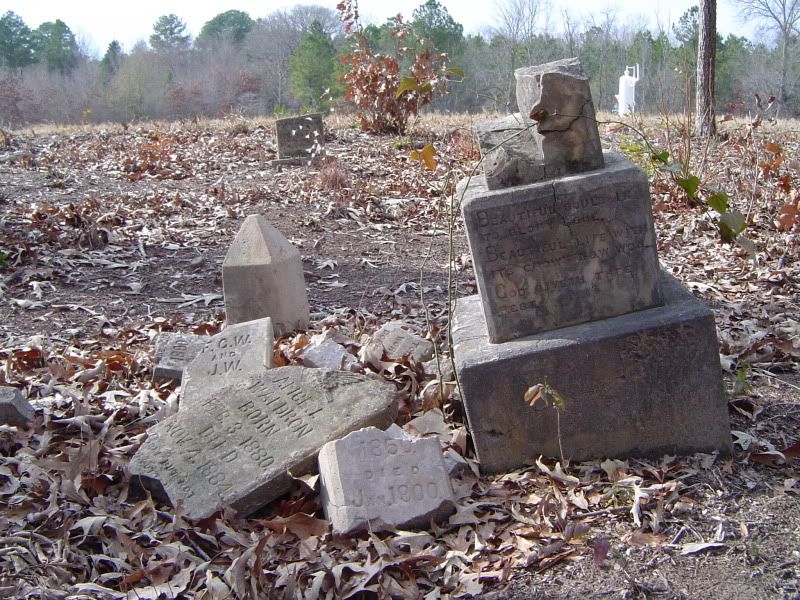
A view of Camden Cemetery, with the natural gas pipeline clearly visible in what used to be the middle of town
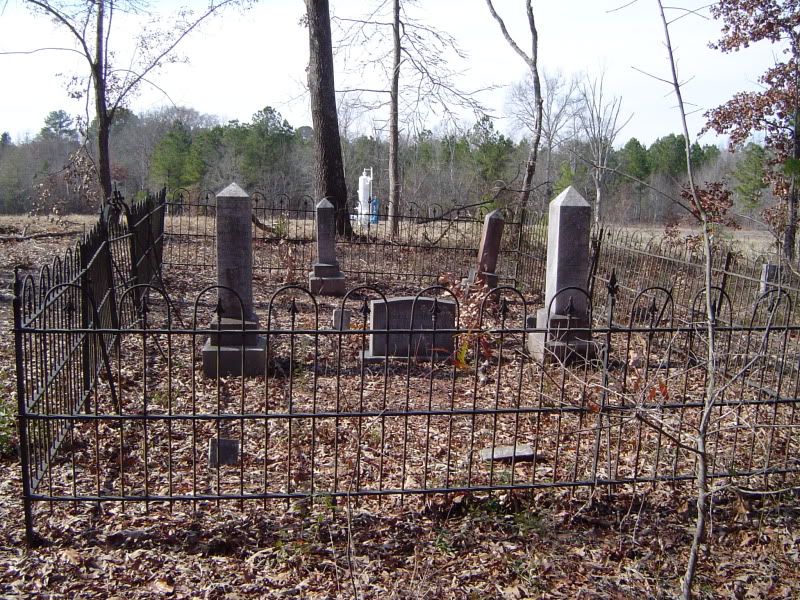
The Waldron family plot at Camden Cemetery
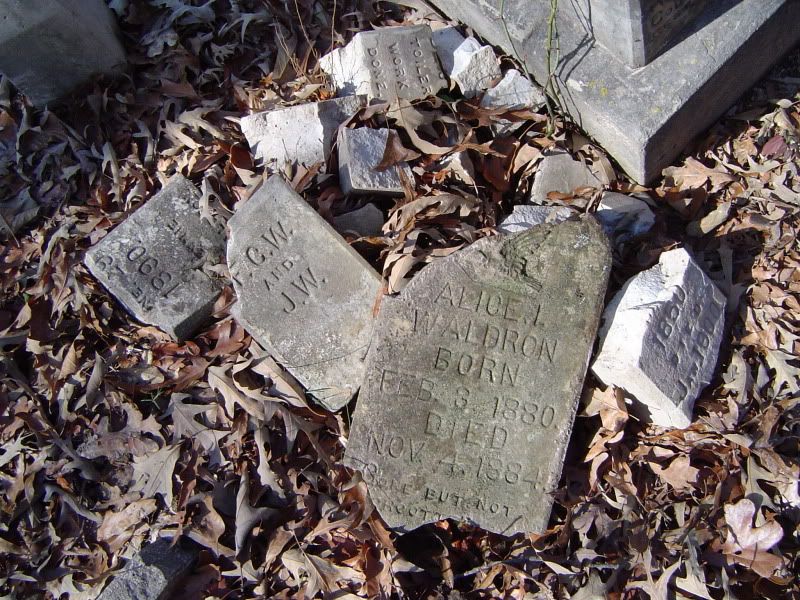
Shattered tombstones at Camden Cemetery; the discovery of shotgun shells nearby suggests vandalism
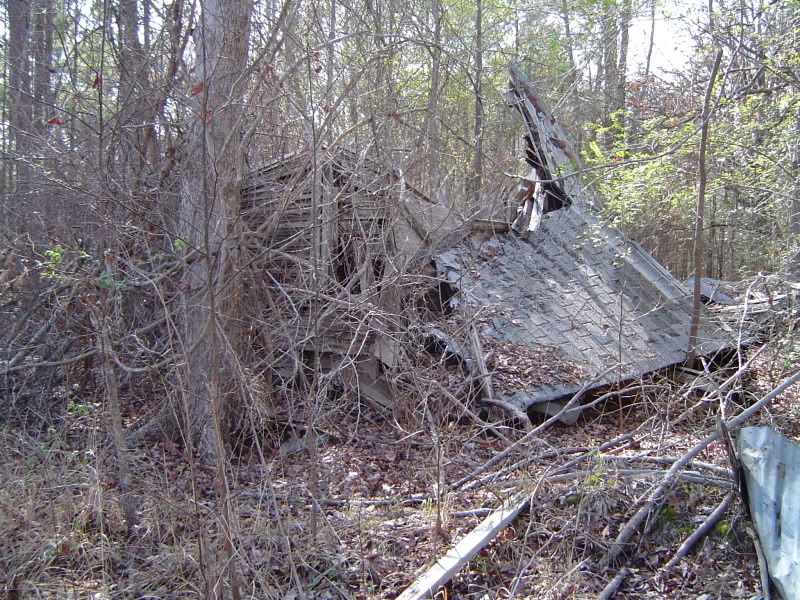
Collapsed remains of a wooden house at Camden
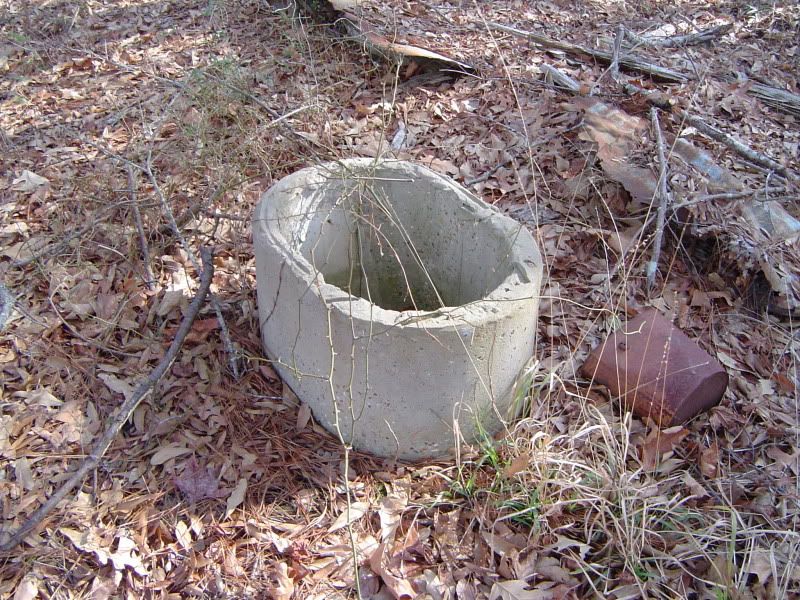
An old well behind the wooden house
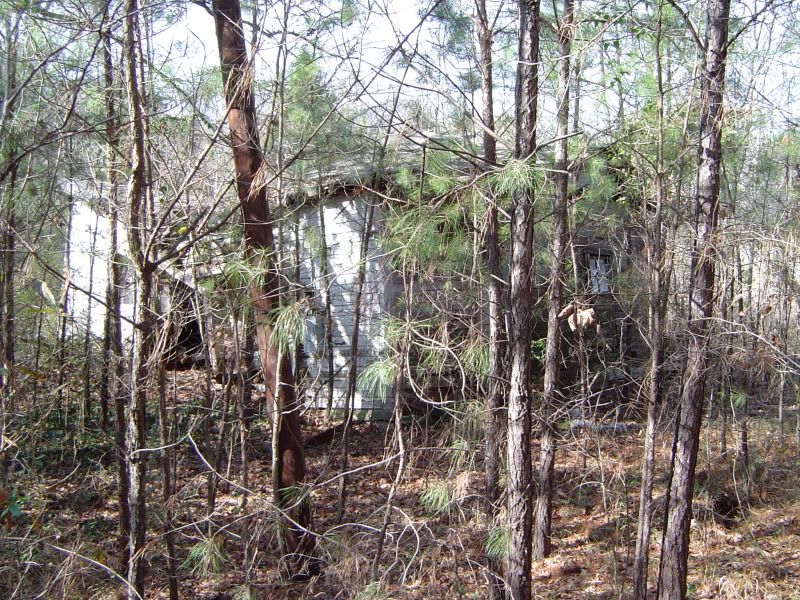
I call this collapsing house the "Camden White House" for want of a better name
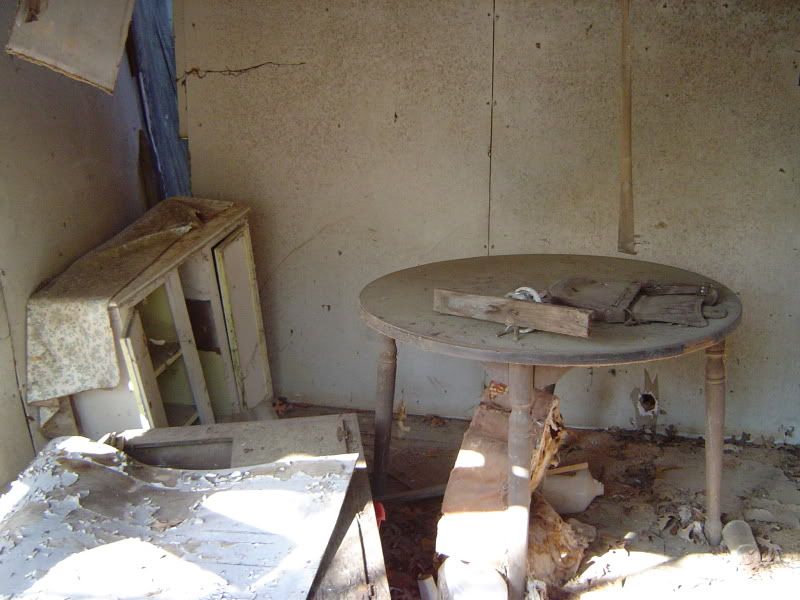
Still life within the kitchen of the Camden White House
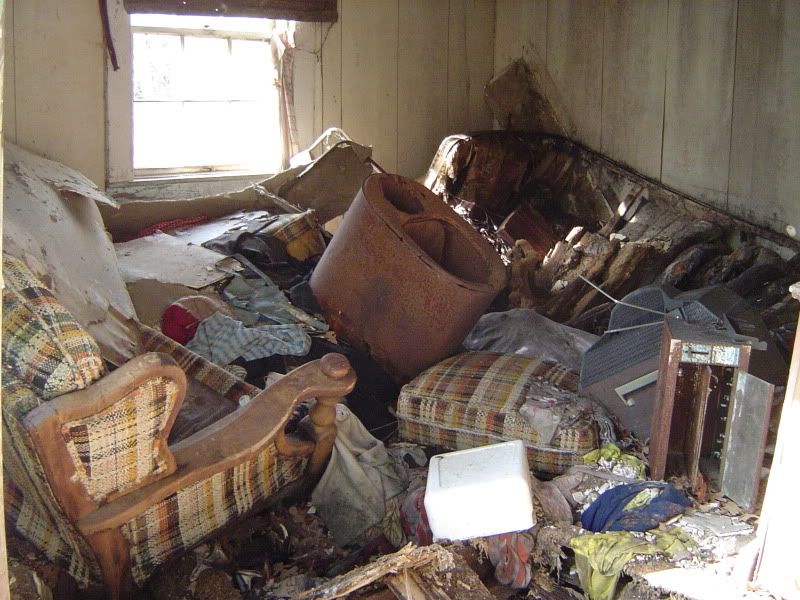
Abandoned furniture and debris in the living room of the Camden White House
It turns out that the January 17, 2011 edition of the Tyler Morning Telegraph published its own article on the history of Camden as well as the development of Easton; it's definitely worth a look. There is now a push by Walter Ward, mayor of Easton, to have the cemetery at Camden officially recognized by Texas as a historical site. I wish him the best of luck.
And Iron Bridge? The irony is that Iron Bridge not only became a ghost town - all traces of the town appear to have vanished completely from the face of the earth, while just enough of Camden remained to be rediscovered by Texas ghost town enthusiasts today.
Hello, I was reading your article and really enjoyed it. However, I grew up in a little town called Camden Texas. It still exist. The map that is shown with this article is actually a map leading to the post office in Camden, Texas, Polk county, where my family still receives mail. Although the town only has one or two residents living there, it still fits the basic description of the Camden spoken in this article. The Camden that the map leads to is located in Polk County, approximately 8 miles east of Corrigan Texas off of 942. It originated as a sawmill town in 1898, established by a company owned by W.T. Carter & Bro. in 1883 with Ernest A. Carter and Jack Thomas.
ReplyDelete